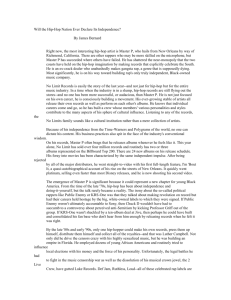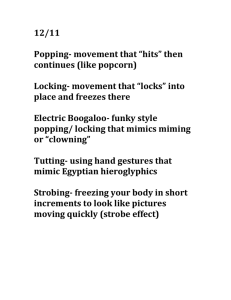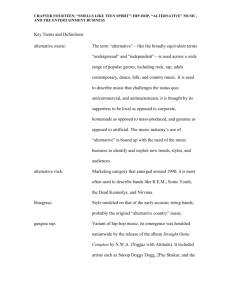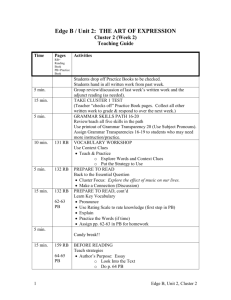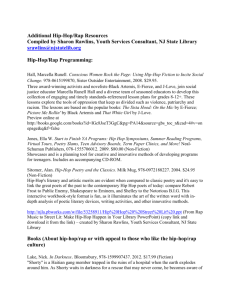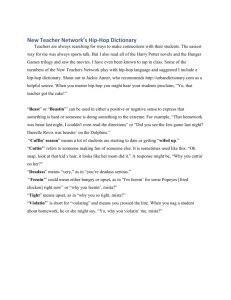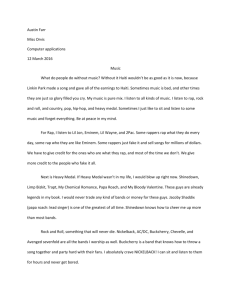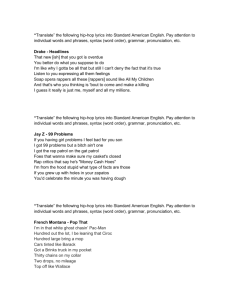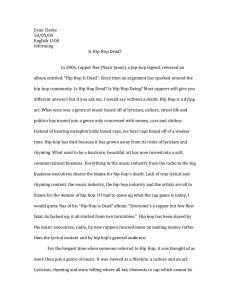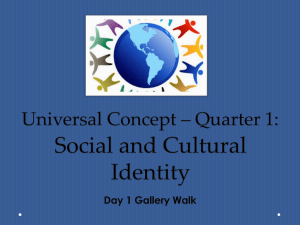the-timeline-of-events-hiphop
advertisement
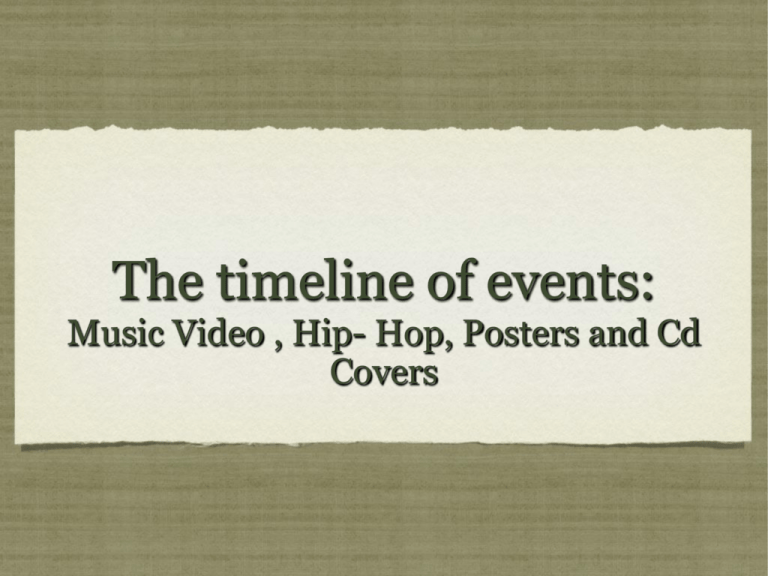
The timeline of events: Music Video , Hip- Hop, Posters and Cd Covers The foundation of Music video Definition: A music video is... “a videotaped performance of a recorded popular song, usually accompanied by dancing and visual images interpreting the lyrics. Usually three to five minutes long, music videos typically feature quick cuts, computer graphics, and fanciful or erotic imagery. ” We live in a world where we consume various media technologies in order to feel satisfied. Music videos can be dated in existence since 1894, and has developed not only to be a powerful mechanism for the use of persuasion, but also used for satisfaction. Through different technologies, we can now find a number of ways to find songs and videos. Music Video:1894 The first music video was first published by Edward B. Marks and Joe Stern, who had hired electrician George Thomas and some performers to promote the sales of their company through a theme song called “The Little Lost Child”. By using a magic lantern (a 17th century projector), Thomas was able to project a sequence of still images on a screen. This then became a hit sensation and was used mainly from the late 1920’s for short entertainment purposes such as short musicals that lasted for 6 minutes. The timeline of events: hip-hop Definition: Hip hop is a form of musical expression and artistic culture that originated in African- American and Latino communities during the 1970s in New York. It comprises 4 main pillars of the Hip-Hop culture. These are; MC, DJ, Beatboxing and graffiti writing. Its emergence with disc jockeys created rhythmic beats by looping the breaks, which later became known as rap. It’s music has also has an influence on dance style, creating a fashion of street dance, jerking, break dancing e.t.c. Here is a youtube video identifying the timeline of hop- hop http://www.youtube.com/watch?v=-sEOG2G5Wt8 1970’s- 1980’s 1970‘s- Hip- hop originally started off without vocals, where the DJ used an audio mixer and two records to ‘scratch the records’, which extended the song. During this era R’n’B was known as Rhythm and Blues, which incorporated a touch of jazz, soul, blues, disco, fast beats and techno. Popular artists during the 1970’s were James Brown, DJ Hollywood, DJ Afrika Bambaataa. 1980‘s - The genre developed using diverse and complex styles such as funky house, rap vocals, variety of beat mixes, scratching using wax and heavy techno (in recording). Its focus relied less on the music and more on the rap. However, both were balanced out. Dj’s then started using Popular artists during this time frame such as Run DMC and the ‘Funky 4 Plus One’ who were the first to appear on national television (14th February 1982). 1990’s • • • 1990’s- During this era, hip-hop had grown significantly internationally, becoming one of the popular genres listened to. Rather than being just ‘funky’ dance songs, hip hop had developed to tell stories on contemporary issues. Artists such as The Notorious B.I.G, Busta Rhymes and 2Pac, were very popular in the early 1990’s. Again the style for this music genre started to focus more on the rap as well as fixing their sounds with loud bass, in order to give it a much ‘harder beat’. Hip-hop became authentically recognised through rap from this era onwards. Due to its increasing popularity, hip- hop had caused great influences on television shows introducing Fresh Prince featuring Will Smith who later on became a hip hop rapper during his acting career. During the late 1990’s artists revived the focus of vocals by re-introducing more vocal artists, mainly females and groups. Destiny’s Child, Cherish, Mario, Lauryn Hill, Ashanti, B2K etc. However, many more rappers became known during this period too. Eminem, Dr. Dre, Jay Z, Puff Daddy are all examples. Over the next 20 years, more and more artist became known. 2000- 2011 • • • • In 2000, the success of Jay Z continued to grow immensely. He decided to expand on the number of collaborated songs he produced, in order to create a diverse and ‘new vibe’ of hip-hop style. In 2001 hip-hop mogul, Puff Daddy was allegedly involved in an assault but was then discharged from the case. This had had a significant effect on his music label, where a number of artists including Jennifer Lopez decided to quit the company. It was then that the mogul changed his name form ‘Puff daddy’ to ‘P. Diddy’. The increase in hip-hop consumers reached a global high and influenced several business companies to change the style in which they promoted and marketed their products. In 2003, Run DMC recorded “My Adidas” to promote Adidas while Snoop Dog became a pitchman for AOL, Nokia and XM Satellite. Snoop Dog then created his own TV show ‘Doggy Fizzle Televizzle’. In 2009 British hip-hop artist Jay Sean made a big entrance in the charts internationally with the song “Down”. This prompted the American music industry (still being a popular country for this industry), to collaborate hip-hop artists from both side of the Atlantic, when creating new songs. An example is Chipmunk and Chris Brown, who have recorded several song together such as “Champion”. Timeline of events: CD Cover • • • Definition: A CD cover is the packaging in which the CD lies in. It is used to protect as well as advertise the product through images and writings on the front cover, and content information on the back of the packaging. CD covers were first used for gramophone records, also known as vinyl records (invented by Emile Berliner) in the late 19th century. The cover also informs consumers or readers of the content that is contained on the record. This includes the songs, the record label, the artist etc. James Russel invented CD’s in 1965, which is a much smaller version of a record, and is digitally read. Timeline of events: Posters • • • • A poster is a large printed picture used for advertisement or information. Posters were first used for governmental notifications as well as having a purpose to display public information. Broadsides were intended to have an immediate impact and then to be discarded. Items printed for short term consumption are referred to as printed ephemera. Posters were commonly used as a form of propaganda in both world wars, which sent influencing subliminal messages to the readers that becoming a soldier was an easy and important job. Even now, posters still carry out an influential role in advertising. They promote events, music and items that are on sale. Bibliography • http://en.wikipedia.org/wiki/Hip_hop_music • http://music200.com.ne.kr/en/rock/rock07.html • http://www.rundmc.com/index.cfm/pk/content/pid/400092 • http://rap.about.com/od/hiphop101/a/hiphoptimeline.htm • http://www.youtube.com/watch?v=-sEOG2G5Wt8 • http://www.enotes.com/1990-arts-american-decades/music-hip-hop-trends • http://www.digitaldreamdoor.com/pages/best_rap-timeline3.html • http://inventors.about.com/od/gstartinventions/a/gramophone.htm • http://answers.reference.com/digital/equipment/when_were_cd_invented • http://en.wikipedia.org/wiki/File:Vynil_record.jpg • http://www.designhistory.org/posters.html
